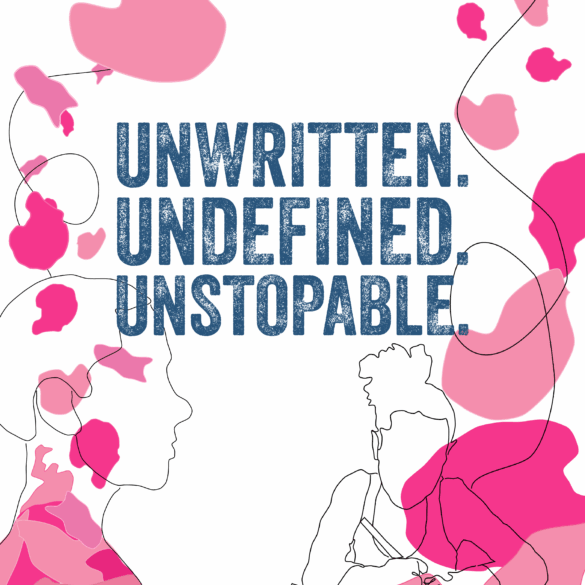Jessica Velez is a fourth-year journalism major and is the Editor-in-Chief of Ball Bearings Magazine. Her views do not necessarily reflect those of the magazine.
There’s something so beautiful about the crisp air of spring. The smell of flowers and mulch travels with you everywhere, and there’s a sense of new beginnings that feels inevitable. A forceful growth that feels petrifying like a spring-tide storm, but always brings out the brightest post-rain rainbows and with it, a better version of ourselves.
That’s exactly how the spring semester of 2023 felt, like a storm poised to rock my world. I found myself sitting in a small women and gender studies class tucked in the corner of the north side of campus.
We’d covered a plethora of important topics in the four-month span of the class. The kinds of topics that often left a pit in your stomach and brewed an anger that one could only describe as overwhelming. But we also spoke of acceptance and women who inspired generations of feminism.
On that beautiful spring day, sitting at an uncomfortable, small school desk, I learned about a topic that would forever change the way I viewed myself and everyone around me.
That word was Intersectionality: A simple word that represents so much.
The Oxford Dictionary defines intersectionality as the interconnected nature of social categorizations such as race, class, and gender as they apply to given individuals or groups, regarded as creating overlapping and interdependent systems of discrimination or disadvantage.
To put it simply, intersectionality is everything that we are and everything we do that gives us privilege or leads to discrimination.
In our class, we were encouraged to dissect ourselves to better understand how intersectionality applies to our lives. I’m a pansexual, able-bodied, afro-latina female born in the United States. There’s a lot to unpack in just that one sentence, but most of those traits come with their own challenges. Racism, homophobia, sexism and so many more “obias” and “isms” could follow me around for the rest of my life.
It’s incredibly difficult to sit in class and have the realization that everything you thought made you unique and powerful actually makes you vulnerable. The safest dissection for anyone is to be a straight, rich, white male. Everything I am not. Everything I will never be.
That is equally terrifying as it is infuriating.
The United Way of the National Capital Area recognizes that intersectionality has roots in the Black feminist movement of the late 20th century. Scholars like Kimberlé Crenshaw used intersectionality as a way to highlight how systems of oppression intersect to create unique forms of discrimination that are often overlooked.
Crenshaw identified three distinct types of intersectionality: structural, political, and representational.
Structural intersectionality examines how various social structures and institutions interact to create unique forms of discrimination. For example, Black women are three times more likely to die from a pregnancy-related complication than white women. A study done by Vanderbilt University assistant professor Rolanda Lister found that one of the main reasons for the high rate of maternal mortality in the Black community is due to racial bias from healthcare providers.
Political intersectionality investigates how political movements can fail to address the needs and concerns of individuals with intersecting identities.
The 1920s women’s suffrage movement, which fought for women’s right to vote, excluded the voice of Black women who weren’t truly given the freedom to vote until the passage of the 1965 Voting Rights Act, according to the California Commission on the Status of Women and Girls.
Representational intersectionality tackles how different groups of people are represented in different imagery, such as TV or social media, and maintains or challenges negative stereotypes. In her TED Talk, “The Danger of a Single Story,” Chimamanda Ngozi Adichie unpacked how only seeing media coverage on Mexican immigration led her to see Mexicans as the “abject immigrant”.
Recognizing and defining these dimensions of intersectionality allows us to create more inclusive spaces and heal the deep wounds that marginalized communities have worn for years.
I’m now two years removed from that pivotal women and gender studies class, and the lessons I’ve learned on intersectionality will stick with me for a lifetime, but I’ve decided to take a different outlook on it.
We’re all multi-dimensional beings who have been taught that the closer we can be to uniform, the better the world will be. But intersectionality isn’t the problem. Our dissimilarities aren’t the problem. The problem is the people who decided to use intersectionality as a way to treat others differently.
It may seem outrageous for me to say that I love intersectionality because it implies that I love something that has led to the discrimination of people for centuries. But, at its core, intersectionality is simply our differences. It’s the things that make us distinct and extraordinary, and yet, it creates community bonds.
Spring is in full swing again. The crimson tulips on campus have bloomed, and the geese are running wild. The permanent smell of rain is in the air, and the days are windy enough to knock over lawn chairs. It’s time for a new beginning, and I invite you to recognize your intersectionality and celebrate it.
Celebrating intersectionality means valuing all of your identities and the way they shape your experiences and personalities.
I’m a pansexual, able-bodied, afro-latina female. I’m a journalist, a sister, an athlete, a yearner, but most of all, I’m human.
Who are you?
Sources: Oxford Dictionary, United Way of the National Capital Area, California Commission on the Status of Women and Girls, TED Talk, Black Maternal Mortality




